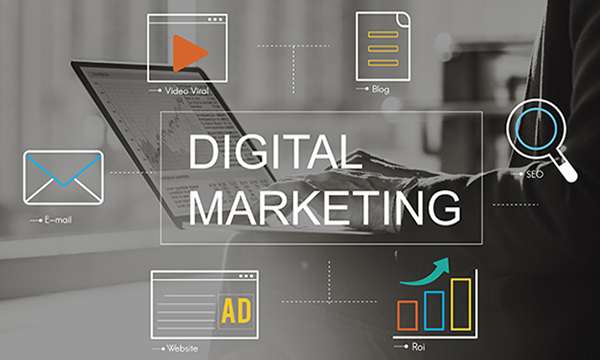Advertising
Blog Category pages subscription form.

What is Advertising?
Promoting Your Business to the Right Audience
Advertising is all about spreading awareness of products, services, or brands to an intended audience across different channels, such as TV, radio, online platforms, and print. The aim is to boost visibility, generate interest, and increase sales. Achieving this requires a strong understanding of who your audience is, developing engaging messages, and choosing the most effective platforms.
What's New

Tracing the Roots
The Historical Journey of Advertising
Advertising has evolved significantly, starting with early print ads in newspapers. As businesses expanded during the Industrial Revolution, ads became crucial for reaching new consumers. In the 20th century, radio and television transformed advertising, reaching millions of homes. Now, digital advertising, social media ads, and targeted display ads are the standard, providing more precision and data than ever before.
Benefits and Drawbacks of Effective Advertising
Pros
- Increased Visibility: Advertising helps your brand become more visible to potential customers, increasing awareness and reach.
- Targeted Reach: With digital advertising, businesses can target specific demographics, ensuring that ads reach the most relevant audience.
- Boosted Sales: Well-placed ads can lead to increased product or service sales by attracting interested consumers.
- Measurable Results: Online ads provide data analytics that help businesses measure the effectiveness of their campaigns.
- Brand Authority: Consistent advertising can position a brand as a leader in its industry, enhancing credibility.
Cons
- High Costs: Advertising can be expensive, especially on premium channels like TV and high-traffic digital platforms.
- Ad Fatigue: Consumers can become tired of seeing the same ads, which may lead to diminishing returns.
- Competition: In competitive markets, standing out with ads requires constant creativity and innovation.
- Ad Blockers: Many consumers use ad blockers, making it harder to reach them with digital ads.
- Short-Term Impact: Some advertising efforts may yield only short-term results unless followed up with other marketing strategies.
10 FAQs about Advertising
What is advertising?
Why is advertising vital for businesses?
How can I create an effective advertising campaign?
What is digital advertising?
How can advertising drive sales?
What role does social media play in advertising?
How do I measure ad campaign success?
What is programmatic advertising?
What are common advertising mistakes?
How does retargeting work?
Contact Us
Glossary of Advertising Terms
Advertising: The process of promoting products, services, or brands to influence consumer behavior.
Digital Advertising: Promoting products or services through digital channels, such as search engines and social media.
Social Media Advertising: Delivering targeted ads on platforms like Facebook, Instagram, and LinkedIn.
Programmatic Advertising: Using automated technology to buy ad space based on audience targeting.
Pay-Per-Click (PPC): An ad model where businesses pay each time an ad is clicked.
Retargeting: Showing ads to individuals who have already interacted with your site or content.
Impressions: The number of times an ad is displayed.
Click-Through Rate (CTR): The percentage of ad viewers who click on the ad.
Return on Ad Spend (ROAS): A measure of revenue generated for each dollar spent on advertising.
Conversion Rate: The percentage of people who take a desired action after interacting with an ad.
Native Advertising: Ads that blend seamlessly with website content, making them appear more natural.
Display Advertising: Visual ads like banners shown on websites and social media platforms.
Search Ads: Text ads displayed in search engine results, targeting users based on their search queries.
Video Advertising: Using videos to promote products or services on digital platforms.
Influencer Advertising: Working with individuals who have large social media followings to promote a brand.
Banner Ads: Image-based ads displayed at the top, side, or bottom of a webpage.
Target Audience: The specific group of people an ad campaign aims to reach.
Cost Per Click (CPC): The cost incurred each time an ad is clicked.
Cost Per Mille (CPM): The cost per 1,000 ad impressions.
Ad Placement: The location where an ad is shown, such as a website, social media platform, or search engine results page.
Ad Copy: The written message in an ad, crafted to engage viewers and encourage action.
Geo-Targeting: Delivering ads to users based on their physical location.
Behavioral Targeting: Showing ads to users based on their previous online actions.
Contextual Advertising: Displaying ads related to the content on a webpage, increasing engagement potential.
Mobile Advertising: Ads tailored for display on smartphones and tablets.
Cross-Device Advertising: Reaching users with ads across multiple devices.
Dynamic Ads: Ads that adjust based on viewer data to enhance relevance.
Ad Creative: The visual components of an ad, such as images and videos.
Landing Page: A webpage where users arrive after clicking an ad, designed for conversions.
Ad Network: A platform that connects advertisers with websites to display their ads.
Ad Exchange: A digital marketplace where ad space is bought and sold.
Frequency Capping: Limiting how many times an ad is shown to a user to prevent oversaturation.
Ad Scheduling: Selecting specific times or days for ads to run, maximizing audience engagement.
Conversion Tracking: Measuring the actions taken after an ad is clicked to gauge effectiveness.
Split Testing (A/B Testing): Testing different ad versions to see which one performs better.
Lookalike Audience: A group with traits similar to a business’s existing customers, targeted in ads.
Ad Relevance Score: A measure of how well an ad fits its audience’s interests.
Viewability: A metric assessing whether an ad is actually visible to users on a webpage.
Remarketing Lists for Search Ads (RLSA): Search ads targeting users based on previous site interactions.
Click Fraud: Fraudulent activity where clicks on ads are artificially generated, inflating costs.
Attribution Model: A system for crediting different channels in driving conversions.
Native Video Ads: Video ads integrated seamlessly into a website or social media content.
Ad Budget: The funds set aside for running an ad campaign.
Creative Brief: A document outlining the campaign’s goals, audience, and messaging.
Ad Blockers: Software that prevents ads from being displayed on certain sites.
Call to Action (CTA): A prompt encouraging the viewer to take a specific action, like “Shop Now” or “Learn More.”
Conversion Funnel: The stages a user goes through, from first seeing an ad to making a purchase.




